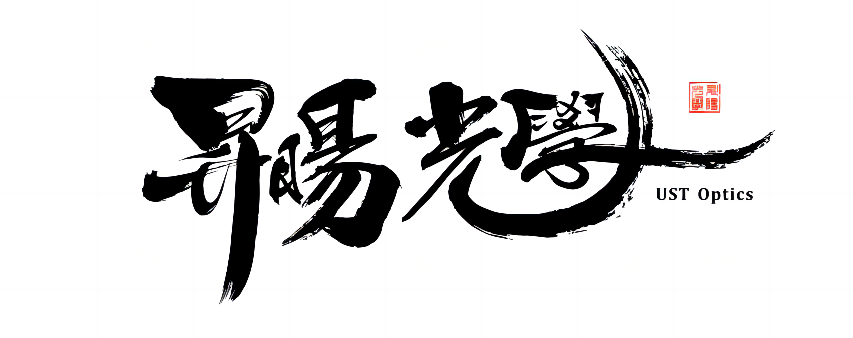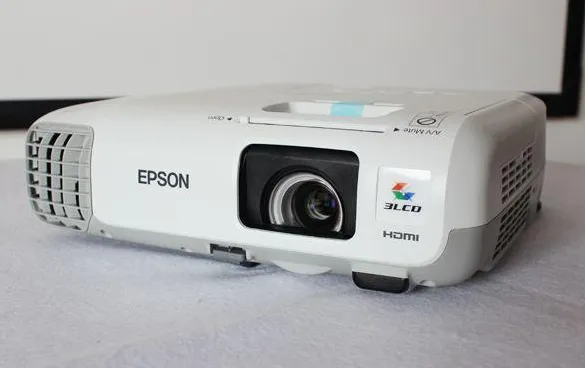


The Exodus of Domestic Projections
The Exodus of Domestic Projections
The Lord commanded Moses, "I swore to Abraham, Isaac, and Jacob, saying, 'I will give the land of Canaan to your descendants.' Now you and the people you brought out of the land of Egypt will go from here to that land. I will send messengers before you to drive out the Canaanites, Amorites, Hittites, Perizzites, Hivites, and Jebusites, and bring you to the land flowing with milk and honey." - Exodus 33

Sparse cutting and starting line
On April 16, 2021, Jimi Technology released its 2020 annual report, which showed that Japan is currently its largest single overseas market, and Aladdin's shipment volume in the first few months of its listing ranked among the top in the Japanese smart projection market. And it is stated that the United States and Europe will be the focus of the company's efforts this year.
On April 24th, HP held a new projector product launch event in Shenzhen, officially announcing its return to the projection market. Its first stop was to cooperate with domestic enterprises and explore the Chinese market through authorization. One in, one out, in line with the basic strategy of China's opening up to the outside world: adhering to the combination of "bringing in" and "going out".
As early as 17 years ago, HP had already laid out its presence in the projection market and launched commercial projectors. In 2010, the founder of Jimi, Zhong Bo, was still working on the Mstar soldering board, and HP launched ultra portable projectors for the Chinese market. However, after briefly exploring various fields such as business, education, and home use, it eventually caught up early and caught up with the evening series. HP's attitude towards the projection industry is a typical "modern history of the projection industry". In this book, major players are overly focused on competing in narrow niche markets, and the consumer grade portable products and home markets that truly cater to the public have not yet been developed. There are also stories of well-known brands such as Lenovo and Dell, and so on.
Founded in 2012, Jimi did not release its first intelligent projection until 2014. The company has accumulated 8 years of experience, and its products have been accumulated for 6 years. Compared to Epson, founded in 1942 and the global leader of 3LCD, which has been leading the Chinese market for 10 consecutive years, the latter certainly does not take Jimi as a "little vegetable bird" in their eyes.

But it is this concept of packaging projectors into "screen less TVs" for the consumer market, which seems to have more gimmicks than product development. For example, the core DMD chip comes from TI, the laser TV lens is purchased from Ricoh in Japan, and before self-developed, the telephoto optical machine was mostly purchased from several major domestic optical machine manufacturers. In addition, the intelligent AI is from Baidu, the speaker is from Harman Karton, and the motion compensation is from the old company Mstar Although Jimi does not have as much technological innovation, it has its own unique competitiveness and relies on consumer experience insights into projection intelligence to perform an "Exodus".

In the past decade, smart projection products have transitioned from industrial products to consumer electronics, opening up a new category with prospects comparable to the transition from feature phones to smartphones (handheld computers). Intelligent projection is gradually becoming the next generation human-computer interaction carrier of living room and mobile office, and an important Internet content platform, which will produce synergy with mobile phones and generate huge energy.
In the years when domestic intelligent projectors were absent, Japanese projectors were once the industry's doctrinaire makers. Nowadays, Japanese brands with a typical "Buddhist style middle age" still hold a large number of technical patents, "lying down and winning" in the traditional business and education market, all the way to the market hegemon's relocation to "juniors" Jimi, and the listing on the Science and Technology Innovation Board. In that field, there are still many "senior figures" who believe that intelligent projectors are still toys for a few people. We all know the later stories.
According to IDC data, the sales of Epson projectors in the Chinese market in 2018 were around 542000 units, lagging behind Jimi by a margin of 30000 units and ranking second in sales. In 2019, due to the shrinking projection market in the business education market, sales of Epson projectors in the Chinese market declined. Compared to 2018, sales decreased by 30000 units, with only about 510000 units sold annually. The sales gap between Epson and Jimi widened to 150000 units.
The old era tickets cannot board the new era ships. In 2018, Jimi, who had been accompanying for a long time, took over the baton and remains the market leader to this day.
Etham
At the 2016 Shenzhen High tech Product Fair, laser display company Guangfeng Technology exhibited a 100 inch laser TV. Dr. Li Yi, founder of Guangfeng, stated in an interview with reporters that this laser TV adopts the ALPD laser display technology independently developed by Guangfeng. ALPD stands for advanced laser fluorescent powder display technology, which solves the industry problem of thermal quenching of fluorescent powder, breaks through the traditional bottlenecks of high cost, speckle, and large volume in laser display, and makes the application of high brightness, high efficiency, and long lifespan laser display technology possible. Li Bo said that in the past, domestic companies used to say that they were outsourcing to some large companies in Japan and South Korea. Guangfeng has this confidence in technology and wants giants like LG to outsource their manufacturing.

2015 will become the first year of laser television. "If laser TVs over 80 inches can be reduced to less than 50000 yuan, they will soon enter the home market," Li Bo said. However, what Li Bo said was more like throwing a smoke bomb at the laser TV industry, and the price reduction trend of laser TVs is far faster than he expected.
In 2017, Guangfeng teamed up with "Price Butcher" Xiaomi to launch a "popularization" storm of laser television. Guangfeng played a leading role, and laser television officially entered the era of ten thousand yuan. This also laid the foundation for Guangfeng Technology to launch on the Science and Technology Innovation Board two years later. After temporarily getting rid of the dilemma of light sources, another big mountain stands in front of many players - the ultra short focus optical lens.
In this field, even if it is as strong as the listed company Guangfeng, when it landed on the Science and Technology Innovation Board in 2019, it included ultra short focus optical lenses as an important risk warning in its prospectus, indicating that the supplier of ultra short focus lenses, Ricoh Japan, is unable to supply normally due to factors such as price, business relations, and trade disputes between countries, which will bring important raw material procurement risks to Guangfeng's production and operation. In 2012, Ricoh launched a new patented technology projection product called "Built in Separation Reflective Ultra Short Focus Optics", which can project 80 inches of large images from a distance of 20cm, which was unimaginable at that time.
At this point, Ricoh has also taken the opportunity to leap from behind the scenes research and development manufacturers to the forefront, officially announcing its entry into the consumer market, and quickly expanding into the short focus and high-end engineering fields in China. It has partnered with Digital China to launch a series of new products, monopolizing over 90% of the Chinese ultra short focus market in just three years. Domestic companies in the ultra short focus lens industry chain have made efforts, and several listed companies in the optical field have made breakthroughs in this field. Although they have achieved some results, they have not been able to break through Ricoh's design patents.
In 2016, the eve of the explosion of laser television. Dr. Li Wenzong, the head of research and development for Hisense Laser Television, a globally renowned optical design expert, left Hisense and founded Shengyang Optics, dedicated himself to the localization research of ultra short focus lenses. For more than three years, he continuously failed and improved. Until 2019, the entire set of patent technology was finally validated, bypassing Ricoh's patent and breaking through the technical bottleneck of ultra close range projection in mass production.
The following year, Shenzhen Shengyang Optics showcased its patented technology "Reverse Axis Far Center Ultra Short Focus Optical Architecture" and module at the Shenzhen High tech Product Fair. Its module achieved smaller size, higher yield, and lower price while maintaining the same quality as Japanese Ricoh ultra short focus lenses. This marks that "from 2020, all the ultra close projection companies in the world have a second choice in lens". With the soaring demand of ultra close projection market, brand owners finally ushered in a Dafengshou (Salad of assorted fresh vegetables) in 2021.
Migdol
In April of this year, the release of the Huishi P9 marked the beginning of the ultra close range transformation in the domestic intelligent projection market. This product uses LED light sources, a 0.26:1 projection ratio, a 1080P resolution, and a 5000mAh external lithium battery module. After three years of sharpening the sword, Huishi has relied on decades of experience in optical design and lens manufacturing from its parent company Chengdu Jinghua Optoelectronics. With an ecological layout of the entire industry chain from glass melting to projection machines, and high self-developed and self-produced lenses and machines, Huishi has created this revolutionary product that balances cost-effectiveness. It is also reported that this year Huishi will release multiple ultra short focus products, focusing on the field of ultra close range projection. In mid April, the Nut Smart Wall O1 was released, innovatively equipped with independently developed leading ultra close range projection technology, making its projection distance to image width ratio (projection ratio) as small as 0.25:1. Users only need to place it only 27cm away from the wall, which is less than one tenth of the projection distance of current telephoto projectors, to enjoy the same or even higher quality projection effects as traditional projectors.
Where is the next stop in the projection industry? At this point, Huawei's rise has provided inspiration.
There are two key points in the rise of Huawei smartphones. One is the success of the Huawei Mate7, which is positioned as a high-end product. Since then, the Mate series has been invincible, with each generation selling very well. Another prediction of user demand for photography led to the inclusion of the Pureview Pure Scene Imaging Technology team and the launch of the Huawei P20, which achieved the top spot in the global DXO camera phone ranking. From then on, Huawei has firmly established itself in the high-end camera phone field.
On the supply side, after the projection industry enters the competition of color, the image performance depends more on the depth ability of the optical lens; On the demand side, the home economy driven by the epidemic has ushered in an outbreak period for home projectors. However, the convenience and upgraded audio-visual experience brought by ultra close range projectors are difficult to recover after use. In the next decade, ultra short focus products will become a battleground for military players.
A land of flowing milk and honey
The rapid increase in China's projection industry chain's international discourse power is not only due to its "world factory" advantage in the supply chain field, but also more importantly from the consumer side, that is, the vast and multi-level market. China has a vast territory and abundant resources. Compared to the common prosperity of Europe and America and the widespread poverty in Africa, China has a complex and diverse consumer demand. It is precisely because of its rich domestic demand market that Chinese manufacturers have the insight to respond to different consumers.
IDC predicts that the compound growth rate of China's projection equipment market will reach 14% from 2020 to 2024. Secondly, the improvement of China's communication infrastructure can enable Chinese manufacturers to quickly pursue cutting-edge technology. Compared with the countries in the third world, China's Internet penetration rate has surpassed the world average, and with the arrival of the 5G era, China, as a "monster of infrastructure", has gradually caught up with the developed countries. In particular, Chinese consumers' Internet based shopping, games, videos and other aspects of life enable manufacturers to quickly grasp the functions of home and entertainment projection to adapt to changes in consumers, which provides good conditions for domestic brands to develop entertainment functions.
Once again, the local competition in China's projection industry is extremely fierce, which gives sustained vitality to the "micro innovation" of Chinese projection products in the form of functional blocks. Looking back at the past decade of rapid development, there have been over a hundred brands that have emerged and disappeared in a market space of only tens of billions, including CoolTV, Shenhua, Lenovo, Weijing, Hisense, Nut, Jimi, Fengmi, Dayan Orange, Dangbei, and so on. It is precisely this intense environment that has nurtured the frequent micro innovation and differentiated competitive advantages of domestic brands. Domestic projectors not only need to compete with "friends" for technological innovation, but also "break through the circle" to educate consumers and constantly guard against the pursuit and interception of international giants. They are in pain and happiness, just like many people's QQ signatures many years ago, "Anyone who kills me will make me stronger.".
The rise of domestic projection will continue to be accompanied by setbacks, glory, and dreams. And it is precisely these setbacks that have enabled it to complete its transformation from copycat and imitation to independent research and innovation leading on the journey of great navigation. Now, it has "crossed the Red Sea" and sailed towards the new world.
Released on May 14, 2021 at 22:48